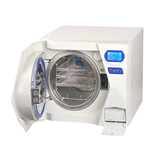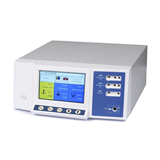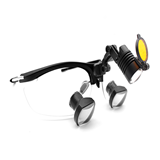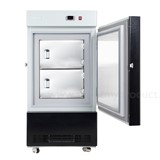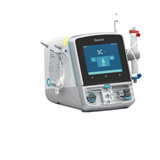Key Takeaways
- Electrosurgical generator prices in Australia typically range from $4,000 to $18,000, depending on type, features and brand.
- Monopolar generators are the most common, used for cutting and coagulation, typically priced from $4,000 to $12,000.
- Bipolar generators offer greater precision, often costing $6,000 to $16,000.
- Combination units (monopolar + bipolar) start from $10,000.
- Financing options can reduce upfront costs, with leases starting from $80/month.
- TGA approval is mandatory for legal use and purchase in Australia.
- Regular preventative maintenance is crucial and may cost around $500–$800 per service.
Introduction
Electrosurgical generators are critical tools in Australian hospitals, day surgeries, and clinics, offering precise cutting and coagulation of tissue during surgical procedures. Buying the right generator can impact surgical outcomes, operational efficiency, and regulatory compliance.
This comprehensive buying guide will walk you through everything you need to know — from understanding types and prices to ensuring certification and securing financing.
Types of Electrosurgical Generators
Choosing the right type is essential for matching your clinical needs:
Monopolar Electrosurgical Generators
- Usage: General surgery, dermatology, ENT procedures.
- How it works: Current passes from the active electrode through the patient's body to a return electrode.
- Typical Price Range: $4,000 – $12,000.
Bipolar Electrosurgical Generators
- Usage: Neurosurgery, ophthalmic surgery, precise tissue control.
- How it works: Current passes between two tips of the instrument, no patient return pad needed.
- Typical Price Range: $6,000 – $16,000.
Combination Units (Monopolar + Bipolar)
- Usage: Versatile for facilities offering multiple surgical disciplines.
- How it works: Offers both monopolar and bipolar outputs in one machine.
- Typical Price Range: $10,000 – $18,000.
Electrosurgical Generator Prices in Australia
As of 2025, here’s what you can expect:
- Entry-level monopolar units: From $4,000 to $7,000.
- Mid-range units with advanced features (e.g., automatic power adjustment, multiple modes): $7,000 to $12,000.
- High-end combination units with touchscreens and programmable settings: $12,000 to $18,000.
Prices vary based on:
- Brand
- Output power.
- Number of modes (cut, blend, coagulate, desiccate).
- Accessories included (handpieces, footswitches, return electrodes).
Additional Costs:
- Accessories: Key accessories like footswitches, electrodes, and return pads can cost an additional $500 – $2,000. These costs can add up over time, especially in high-volume medical settings.
- Maintenance & Calibration: Regular maintenance and calibration are essential to ensure the safety and functionality of the generator. Expect to spend around $500 to $1,500 annually for these services, depending on usage.
How Electrosurgical Generators Operate
- Cutting Mode: High-frequency, low-voltage current for incisions.
- Coagulation Mode: Low-frequency, high-voltage current to control bleeding.
- Blend Modes: Mix cutting and coagulation for surgical efficiency.
- Advanced Features: Some units automatically adjust power based on tissue resistance.
Maintenance and Parts
Proper maintenance ensures safety and longevity:
- Annual preventative maintenance is recommended, typically costing $500–$800 per service.
- Calibration checks should be done yearly or as per the manufacturer’s recommendations.
- Common replacement parts include:
- Active handpieces ($150–$500).
- Return electrodes ($50–$150 each).
- Footswitches ($300–$800).
Financing Options in Australia
Given the high upfront costs of electrosurgical generators, it’s important to explore financing options that best suit your practice’s budget.
- Leasing: Leasing allows you to use the equipment without making a large initial investment. You’ll pay a fixed monthly fee, and at the end of the lease term, you can either renew, purchase the equipment, or return it.
- Supplier Financing: Many suppliers offer financing plans that can be tailored to suit your practice’s needs, such as interest-free periods or low-interest loans.
- Bank Loans: Alternatively, traditional bank loans or equipment financing through financial institutions can help spread the costs.
Warranties:
- Most electrosurgical generators come with a 2-5 year warranty, which covers defects and malfunctions.
- Extended warranties may be available, which could include coverage for repairs, replacements, and priority customer service.
- Ensure you understand what is covered under warranty and whether regular maintenance or accidental damage is included.
Compliance and Certification Considerations
In Australia, medical equipment must comply with stringent safety and regulatory standards to ensure safe use in healthcare environments. When purchasing an electrosurgical generator, it is crucial to ensure it meets the following compliance requirements:
- TGA Approval: All electrosurgical generators must be approved by the Therapeutic Goods Administration (TGA) to be sold in Australia. Ensure that the model you choose is listed on the Australian Register of Therapeutic Goods (ARTG). TGA certification guarantees that the generator has passed safety tests and meets Australian standards for medical equipment.
- IEC 60601 Standard: This international standard governs the safety and performance of medical electrical equipment. Ensure that the generator complies with IEC 60601, which includes requirements for electrical safety, electromagnetic compatibility, and patient protection.
- Electromagnetic Compatibility (EMC): Electrosurgical generators must comply with EMC regulations to prevent interference with other medical equipment. This ensures that the generator’s electrical activity does not disrupt other devices in use within the surgical environment.
By selecting an electrosurgical generator that meets these standards, you ensure safety for both your patients and medical staff.
Common Questions Electrosurgical Generator Buyers Ask
1. What’s the lifespan of an electrosurgical generator?
Typically 8–12 years, depending on usage frequency and maintenance quality.
2. How often does a generator need servicing?
Annual preventative maintenance is recommended, and recalibration may be needed depending on usage.
3. What accessories should I buy upfront?
Consider purchasing extra:
- Handpieces.
- Return electrodes.
- Footswitches. This ensures minimal downtime if parts fail.
4. Can I buy second-hand electrosurgical generators?
Yes, but:
- Always ensure TGA approval.
- Check hours of operation and service history.
- Verify warranty or supplier support.
5. Are software upgrades necessary?
If your model supports software updates, upgrading can improve performance and compliance with updated safety standards.
Final Thoughts
Choosing the right electrosurgical generator is a big decision. Focus on your surgical needs, budget carefully, and always verify compliance.
With the right research (and this guide in hand), you’ll confidently secure a high-performing, compliant, and durable machine tailored for your Australian healthcare facility.








